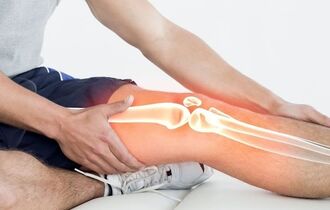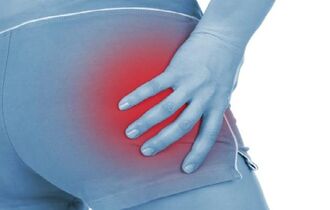Prescribing suitable supportive footwear is the first remedy for flexible flat feet. In general, children's closed-toe shoes can provide structural support for the immature foot. The sneaker should comfortably support the orthosis if this is another measure. The shoes should have a firm sole so that the insole does not press on the inside of the shoe. Modern soft sneakers are not suitable for this purpose. Instead, choose the classic leather models from New Balance and Adidas.
back pain
There is hardly a person who has not had to deal with back or cervical spine pain at least once in their life. About 8 out of 10 people have experienced this problem at least once in their life.
The pain most commonly occurs in the lower back, but it can also spread along the entire spine. Pain in the cervical spine is often due to poor posture.
Pain in the lower back area occasionally occurs 25 % of people aged 30 to 50 suffer from recurrent lower back pain.And the likelihood of recurrence increases with age.
Because we don't take this pain seriously, it gets worse over time. In about 5% of cases, back pain leads to the development of a serious illness.
Neck pain is usually the result of persistent tension in the cervical spine (occipital spine) caused by incorrect posture, improper positioning at work, or constant muscle tension. The pain can spread from the neck to the shoulders.
What are the causes of back pain?

Poor posture, sedentary lifestyle (poor posture, prolonged muscle tension increase the risk of pain).

Excessive body weight (excess weight puts strain on the spine and leads to chronic back pain).

Damage to the muscles and ligaments of the back leads to the release of inflammatory factors that affect the nerve endings at the site of inflammation and result in pain).

Overexertion (excessive physical activity can cause tissue damage. Tissue damage leads to the release of inflammatory factors that cause pain).

Pregnancy (increased pressure on the back and lower back. This can cause pain).
How does a flat foot occur?
In infants and small children there is a fat pad under the medial longitudinal arch of the foot that supports the weak arch of the foot as a natural 'supinator'. However, this fat pad dissolves between the ages of 2 and 5, when the arch of the foot forms and walking begins. Children who begin to walk independently almost always have 'flat feet'. Immature muscles and poor neuromuscular control cause the foot to flatten under stress. A lowering of the longitudinal arch of the foot is the main symptom of flat foot, which causes the weight of the body to shift to the medial (inner) side of the foot when standing and walking. Flat foot is therefore considered not only as a problem of static alignment of the ankle and foot structures, but also as a dynamic functional deviation of the lower limbs. This overload mechanism, resulting from the flattening of the medial longitudinal arch, impacts proximal areas such as the knee, hip, and lower spine.
The prevalence of flat feet in the age groups 2-6 and 8-13 years is 37-59 % and 4-19 %, respectively. Childhood flatfoot occurs in the first years of life and only persists in 3 % of adults. The incidence of flat feet is inversely proportional to age.
What types of flat feet in children are there?
Flat feet in children can be divided into 'flexible' and 'rigid' flat feet. Flexible flatfoot is characterized by a normal, unloaded arch and a flattening of the arch when standing or walking. It can be asymptomatic or cause pain in the foot. Rigid flatfoot is characterized by a rigid flattening of the arch of the foot with or without weight bearing. Infants are born with rigid flat feet, and the normal arch of the foot develops during the first ten years of life. Most cases of rigid (stiff) flatfoot are associated with other conditions that require specific medical treatment. These include general ligament weakness, neurological and muscular abnormalities, and genetic disorders.
Factors that may predispose to flat feet include age, gender, body type, ligament weakness, family history, type of footwear, and age at which shoes began to be worn. Boys are twice as likely to suffer from flat feet as girls. Overweight and obese children are more likely to have flat feet than children of normal weight. Children with weak ligaments may also be predisposed to flat feet due to impaired arch development. Another important factor can be a family history of flat feet. If children start wearing unsuitable shoes before the age of six, this can be another factor that promotes flat feet.
arthritis of the foot
Arthritis of the foot is a condition that causes swelling or inflammation of the joints. Patients whose feet are affected by arthritis often alter their gait to avoid pain while walking. This results in certain parts of the foot being placed under greater stress than usual, resulting in pain in the arch of the foot.
Prevention and treatment of osteoarthritis in the foot
Unfortunately, there is no specific way to prevent foot arthritis. However, there are a number of measures that reduce the risk of developing this condition:
- maintaining a healthy body weight;
- regular exercise;
- a balanced diet with little sugar and alcohol;
- Do not smoke.
Treatment for arthritis in the foot depends on the type of disease. However, in most cases it involves physical therapy, over-the-counter painkillers and anti-inflammatory medications, and wearing orthotics.
Danger!!! Early diagnosis and treatment of foot arthritis is very important because only in the early stages can the progression of the disease be slowed and a lasting remission achieved.
Foot injuries
Sometimes foot injuries (sprains, broken bones, bruises) are the cause of foot pain. If you have recently suffered a lower limb injury and are now experiencing frequent arch pain, you should see your doctor.
Tarsal tunnel syndrome is a foot condition in which the tibial nerve, which runs through the tarsal tunnel on the inside of the ankle, is pinched. Most commonly, tarsal tunnel syndrome causes pain and tingling in the heels, ankles, and lower legs. Tingling and burning in the arch of the foot also often occurs.
Treatment of tarsal tunnel syndrome
If you think you have tarsal tunnel syndrome, you should first make an appointment with an orthopedist to get an accurate diagnosis. In most cases, the syndrome is treated with long-term rest. It is not uncommon for the doctor to prescribe anti-inflammatory medication during this time to relieve pain and swelling. In addition to rest, physical rehabilitation is also performed, which includes stretching exercises to loosen the muscles, ligaments and tendons of the foot.
diagnostic procedures
There are many different causes of foot pain. The actual cause can only be determined through a comprehensive examination. The following diagnostic methods will help determine the cause of the suffering:
The most accurate and safest is the MRI scan, which does not expose the patient to radiation like an X-ray. Thanks to modern equipment, it is possible to diagnose even the most hidden problems and complaints - the results are accurate up to 95 %.
Prevention of foot pain
The foot is a complex 'mechanism' comprising many ligaments, joints, bones, tendons and muscles. Therefore, it is better to prevent the development of a disease than to have pain later and seek treatment. Preventive measures are:
- gymnastics and massaging the feet;
- Wearing comfortable shoes (preferably with orthopedic insoles) with a medium-high heel;
- weight control to prevent weight gain;
- Controlling body weight to prevent obesity; – Elimination of flat feet;
- Train only in special sports shoes that should be changed at least every six months;
- Warm up your feet before putting them under strain;
- Walk barefoot on grass;
- If your feet get tired or sore, take a break and give your feet a rest;
- Go to the pool and take swimming lessons;
- Be active (jogging, skiing, cycling, hiking);
- If you need to buy a new pair of shoes, do so in the afternoon when your feet are slightly swollen.
Take care of your health and you will always walk lightly and never have to worry about foot pain!

Causes of joint pain
According to epidemiological studies, joint pain is more common in people over 40 years old...

There are many causes that can cause pelvic pain. The most common include…
Read more:- Longitudinal and transverse arches of the foot.
- Which ligaments strengthen the transverse arch of the foot?.
- Pain in the heel bone of the foot.
- The longitudinal arch of the foot is.
- Which doctor treats flat feet?.
- Pain in the crook of the foot.
- flat feet (valgus foot).
- flat foot pronation.
